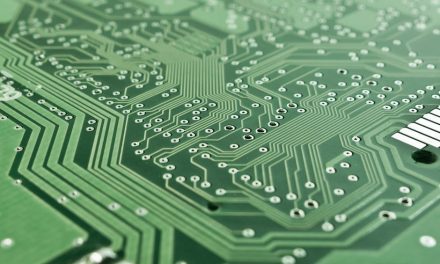Table of Contents
“Embrace the Future: Stay Ahead with the Top 10 Tech Trends of 2023”
Introduction
Introduction:
As technology continues to evolve at an unprecedented pace, it is crucial for leaders to stay informed about the latest tech trends that can significantly impact their industries. In 2023, several emerging technologies are expected to gain momentum and reshape various sectors. From artificial intelligence and blockchain to augmented reality and quantum computing, these top 10 tech trends leaders should watch out for in 2023 have the potential to revolutionize businesses, enhance customer experiences, and drive innovation to new heights.
Artificial Intelligence and Machine Learning Advancements

Artificial Intelligence (AI) and Machine Learning (ML) have been at the forefront of technological advancements in recent years, and their impact is only expected to grow in the coming years. As leaders in the tech industry, it is crucial to stay informed about the latest trends and developments in AI and ML. In this article, we will explore the top 10 tech trends in AI and ML that leaders should watch out for in 2023.
1. Natural Language Processing (NLP): NLP is a branch of AI that focuses on the interaction between computers and human language. In 2023, we can expect significant advancements in NLP, enabling machines to understand and respond to human language more accurately and naturally. This will have profound implications for various industries, including customer service, healthcare, and content creation.
2. Reinforcement Learning: Reinforcement learning is a type of ML that allows machines to learn from their own experiences and make decisions based on rewards and punishments. In 2023, we can anticipate breakthroughs in reinforcement learning algorithms, enabling machines to achieve even higher levels of autonomy and decision-making capabilities.
3. Explainable AI: As AI systems become more complex, there is a growing need for transparency and explainability. In 2023, leaders should pay attention to advancements in explainable AI, which aim to provide insights into how AI systems make decisions. This will be particularly important in sectors such as finance and healthcare, where trust and accountability are paramount.
4. Edge Computing: Edge computing refers to the processing and analysis of data at the edge of the network, closer to the source of data generation. In 2023, we can expect increased adoption of edge computing in AI and ML applications. This trend will enable faster processing, reduced latency, and improved privacy, making it ideal for applications that require real-time decision-making.
5. Federated Learning: Federated learning is a distributed approach to ML, where models are trained on decentralized data sources without the need for data sharing. In 2023, leaders should keep an eye on federated learning as it offers a privacy-preserving solution for training AI models on sensitive data. This trend will be particularly relevant in industries such as healthcare and finance, where data privacy is a top concern.
6. Generative AI: Generative AI refers to the ability of machines to create new content, such as images, music, or text. In 2023, we can expect significant advancements in generative AI, enabling machines to produce more realistic and creative outputs. This trend will have implications for various industries, including entertainment, advertising, and design.
7. AI-powered Cybersecurity: As cyber threats become more sophisticated, AI-powered cybersecurity solutions will play a crucial role in protecting organizations from attacks. In 2023, leaders should watch out for advancements in AI-powered cybersecurity, including anomaly detection, threat intelligence, and automated incident response. These solutions will help organizations stay one step ahead of cybercriminals.
8. AI in Healthcare: The healthcare industry stands to benefit greatly from AI and ML advancements. In 2023, leaders should pay attention to the integration of AI in healthcare, including diagnosis and treatment recommendation systems, personalized medicine, and drug discovery. These applications have the potential to revolutionize patient care and improve health outcomes.
9. AI Ethics and Governance: As AI becomes more pervasive, ethical considerations and responsible governance become paramount. In 2023, leaders should prioritize AI ethics and governance frameworks to ensure that AI systems are developed and deployed in a fair, transparent, and accountable manner. This will help build trust with users and mitigate potential risks associated with AI technologies.
10. Quantum Computing and AI: Quantum computing has the potential to revolutionize AI and ML by solving complex problems at an unprecedented speed. In 2023, leaders should keep an eye on the intersection of quantum computing and AI, as advancements in quantum computing could unlock new possibilities for AI applications, such as optimization, simulation, and pattern recognition.
In conclusion, AI and ML advancements in 2023 will have a profound impact on various industries. Leaders should stay informed about the top 10 tech trends in AI and ML, including natural language processing, reinforcement learning, explainable AI, edge computing, federated learning, generative AI, AI-powered cybersecurity, AI in healthcare, AI ethics and governance, and the intersection of quantum computing and AI. By staying ahead of these trends, leaders can harness the power of AI and ML to drive innovation and stay competitive in the rapidly evolving tech landscape.
Internet of Things (IoT) and Smart Devices
The Internet of Things (IoT) and smart devices have been steadily gaining momentum over the past few years, and this trend is expected to continue in 2023. As technology continues to advance, more and more devices are becoming connected to the internet, allowing for greater convenience and efficiency in our daily lives.
One of the key trends to watch out for in 2023 is the increased integration of IoT devices into our homes. Smart homes are becoming more popular, with homeowners being able to control various aspects of their homes, such as lighting, heating, and security, through their smartphones or voice assistants. This trend is expected to continue to grow, with more devices being connected to the internet and offering even more functionality.
Another trend to watch out for is the increased use of IoT devices in industries such as healthcare and manufacturing. In healthcare, IoT devices can be used to monitor patients remotely, allowing for more personalized and efficient care. In manufacturing, IoT devices can be used to monitor and optimize production processes, leading to increased productivity and cost savings.
The use of smart devices in transportation is also expected to grow in 2023. Connected cars are becoming more common, with features such as GPS navigation, real-time traffic updates, and remote vehicle diagnostics. This trend is expected to continue, with more advanced features being added to cars, such as autonomous driving capabilities.
In addition to homes, industries, and transportation, the IoT is also making its way into our cities. Smart cities are being developed, with the goal of using technology to improve the quality of life for residents. This can include things like smart streetlights that adjust their brightness based on the time of day, or sensors that monitor air quality and alert authorities to potential issues.
As the number of connected devices continues to grow, so does the need for robust cybersecurity measures. This is another trend to watch out for in 2023. With more devices being connected to the internet, there is an increased risk of cyberattacks. Leaders will need to invest in cybersecurity solutions to protect their devices and data from potential threats.
The increased use of IoT devices also raises concerns about privacy. With more devices collecting and transmitting data, there is a need for clear regulations and guidelines to protect individuals’ privacy. Leaders will need to navigate this complex landscape and ensure that they are complying with relevant laws and regulations.
Another trend to watch out for in 2023 is the increased use of artificial intelligence (AI) in conjunction with IoT devices. AI can help analyze the vast amounts of data collected by IoT devices and provide valuable insights. This can lead to more efficient decision-making and improved outcomes in various industries.
In conclusion, the Internet of Things (IoT) and smart devices are set to continue their rapid growth in 2023. From smart homes to connected cars and smart cities, the possibilities are endless. However, with this growth comes the need for robust cybersecurity measures and privacy regulations. Leaders will need to stay informed about these trends and adapt their strategies accordingly to fully harness the potential of IoT and smart devices.
Cybersecurity and Data Privacy Measures
In today’s digital age, cybersecurity and data privacy have become paramount concerns for individuals and organizations alike. With the increasing reliance on technology and the growing threat of cyberattacks, leaders must stay vigilant and proactive in implementing effective cybersecurity measures. As we look ahead to 2023, several emerging tech trends in this field are worth watching out for.
First and foremost, artificial intelligence (AI) and machine learning (ML) are expected to play a significant role in enhancing cybersecurity. These technologies can analyze vast amounts of data, identify patterns, and detect anomalies in real-time, thereby enabling organizations to respond swiftly to potential threats. AI-powered cybersecurity systems can also learn from past incidents and continuously improve their defense mechanisms.
Another trend to watch out for is the rise of quantum computing. While still in its early stages, quantum computers have the potential to break traditional encryption algorithms, posing a significant threat to data security. As quantum computing advances, leaders must invest in developing quantum-resistant encryption methods to safeguard sensitive information.
The Internet of Things (IoT) is another area that demands attention in terms of cybersecurity. With the proliferation of connected devices, the attack surface for cybercriminals has expanded exponentially. Leaders must prioritize securing IoT devices and networks to prevent unauthorized access and potential breaches. Implementing robust authentication protocols, encryption, and regular software updates are crucial steps in this regard.
Blockchain technology, known for its decentralized and immutable nature, is also gaining traction in the realm of cybersecurity. By leveraging blockchain, organizations can enhance data integrity, transparency, and trust. Blockchain-based solutions can help protect against data tampering, ensure secure transactions, and enable secure sharing of sensitive information.
As the world becomes increasingly interconnected, the need for international collaboration in cybersecurity efforts becomes more apparent. Leaders should actively participate in global initiatives and partnerships to share best practices, exchange threat intelligence, and collectively combat cyber threats. Collaboration among governments, private sector entities, and cybersecurity experts is essential to effectively address the evolving landscape of cyber threats.
In addition to technological advancements, leaders must also focus on fostering a cybersecurity culture within their organizations. Employee awareness and training programs are vital in ensuring that individuals understand the importance of cybersecurity and their role in safeguarding sensitive data. Regular security audits, incident response drills, and clear policies and procedures can help create a security-conscious workforce.
Furthermore, privacy regulations and compliance requirements are evolving rapidly, and leaders must stay abreast of these changes. The General Data Protection Regulation (GDPR) in Europe and the California Consumer Privacy Act (CCPA) in the United States are just a few examples of the increasing emphasis on data privacy. Leaders should proactively assess their data handling practices, implement necessary controls, and ensure compliance with relevant regulations to avoid legal and reputational risks.
Lastly, the emergence of 5G technology brings both opportunities and challenges in terms of cybersecurity. While 5G promises faster speeds and greater connectivity, it also introduces new vulnerabilities. Leaders must work closely with telecommunications providers to ensure that robust security measures are in place to protect against potential threats to critical infrastructure and sensitive data.
In conclusion, cybersecurity and data privacy measures will continue to be of utmost importance in 2023 and beyond. Leaders must stay informed about emerging tech trends, leverage advanced technologies like AI and blockchain, foster a cybersecurity culture, and comply with evolving regulations. By proactively addressing these challenges, organizations can mitigate risks and protect their valuable assets in an increasingly interconnected world.
Blockchain Technology and its Applications
Blockchain Technology and its Applications
Blockchain technology has been making waves in various industries, and its potential applications continue to expand. As we look ahead to 2023, it is crucial for leaders to keep a close eye on the top tech trends, and blockchain is undoubtedly one of them. In this article, we will explore the key aspects of blockchain technology and its potential impact on businesses.
First and foremost, let’s understand what blockchain technology is. At its core, blockchain is a decentralized and distributed ledger that records transactions across multiple computers. This technology ensures transparency, security, and immutability of data, making it an ideal solution for various industries.
One of the most significant applications of blockchain technology is in the financial sector. Blockchain has the potential to revolutionize the way we conduct financial transactions, eliminating the need for intermediaries and reducing costs. With blockchain, transactions can be executed faster, more securely, and with greater transparency. This technology has the potential to disrupt traditional banking systems and enable faster cross-border payments.
Beyond finance, blockchain technology has the potential to transform supply chain management. By leveraging blockchain, companies can track and trace products from their origin to the end consumer, ensuring transparency and authenticity. This technology can help eliminate counterfeit products, reduce fraud, and improve overall supply chain efficiency. With blockchain, consumers can have complete visibility into the entire supply chain, ensuring the authenticity and quality of the products they purchase.
Another area where blockchain technology is gaining traction is in healthcare. Blockchain can securely store and share patient data, ensuring privacy and security. This technology can enable interoperability between different healthcare providers, allowing for seamless sharing of patient records. With blockchain, patients can have greater control over their health data, ensuring that it is only accessible to authorized individuals.
Blockchain technology also has the potential to revolutionize the energy sector. With the rise of renewable energy sources, blockchain can enable peer-to-peer energy trading, allowing individuals to buy and sell excess energy directly. This technology can help create a decentralized energy grid, reducing reliance on traditional energy providers and promoting sustainability.
In addition to these industries, blockchain technology is also being explored in areas such as real estate, voting systems, intellectual property rights, and more. The potential applications of blockchain are vast, and leaders need to stay informed about the latest developments in this field.
However, it is important to note that blockchain technology is not without its challenges. Scalability, energy consumption, and regulatory concerns are some of the key issues that need to be addressed for widespread adoption. As leaders, it is crucial to understand these challenges and work towards finding solutions that can unlock the full potential of blockchain technology.
In conclusion, blockchain technology is poised to be a game-changer in various industries in the coming years. Its potential applications are vast, ranging from finance to healthcare, supply chain management to energy. As leaders, it is essential to stay informed about the latest trends and developments in blockchain technology and explore how it can be leveraged to drive innovation and growth in your respective industries. By embracing blockchain, businesses can stay ahead of the curve and unlock new opportunities in the digital age.
Q&A
1. What are the top 10 tech trends leaders should watch out for in 2023?
– Artificial Intelligence (AI) advancements
– Internet of Things (IoT) expansion
– 5G network implementation
– Cybersecurity advancements
– Augmented Reality (AR) and Virtual Reality (VR) growth
– Blockchain technology adoption
– Edge computing development
– Quantum computing advancements
– Automation and robotics integration
– Sustainable technology solutions
2. Why should leaders pay attention to these tech trends?
– These trends have the potential to disrupt industries and create new opportunities.
– Staying ahead of these trends can give leaders a competitive advantage.
– Embracing these technologies can improve operational efficiency and productivity.
– Leaders need to understand the implications and risks associated with these trends.
3. How can leaders prepare for these tech trends?
– Stay updated on the latest advancements and research in these areas.
– Invest in research and development to explore potential applications for their industry.
– Foster a culture of innovation and encourage employees to explore these technologies.
– Collaborate with technology partners and startups to stay at the forefront of these trends.
4. What are the potential benefits of embracing these tech trends?
– Improved customer experience and engagement.
– Increased operational efficiency and productivity.
– Enhanced data analytics and insights.
– Cost savings through automation and optimization.
– Competitive advantage in the market.
– Potential for new revenue streams and business models.
Conclusion
In conclusion, leaders should be aware of the following top 10 tech trends in 2023:
1. Artificial Intelligence (AI) advancements will continue to transform industries and improve efficiency.
2. The Internet of Things (IoT) will expand, connecting more devices and enabling smarter automation.
3. 5G technology will revolutionize connectivity, enabling faster and more reliable communication.
4. Augmented Reality (AR) and Virtual Reality (VR) will find wider applications in various sectors.
5. Blockchain technology will continue to disrupt industries, particularly in finance and supply chain management.
6. Edge computing will gain prominence, allowing faster data processing and reducing latency.
7. Quantum computing will progress, potentially solving complex problems that are currently unsolvable.
8. Cybersecurity will remain a top concern as technology advances, requiring robust measures to protect data.
9. Biometric authentication will become more prevalent, enhancing security and convenience.
10. Sustainable technology solutions will be in high demand, as businesses prioritize environmental responsibility.
Leaders should stay informed about these trends to make informed decisions and stay competitive in the rapidly evolving tech landscape of 2023.




